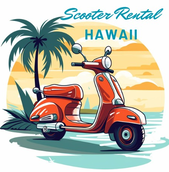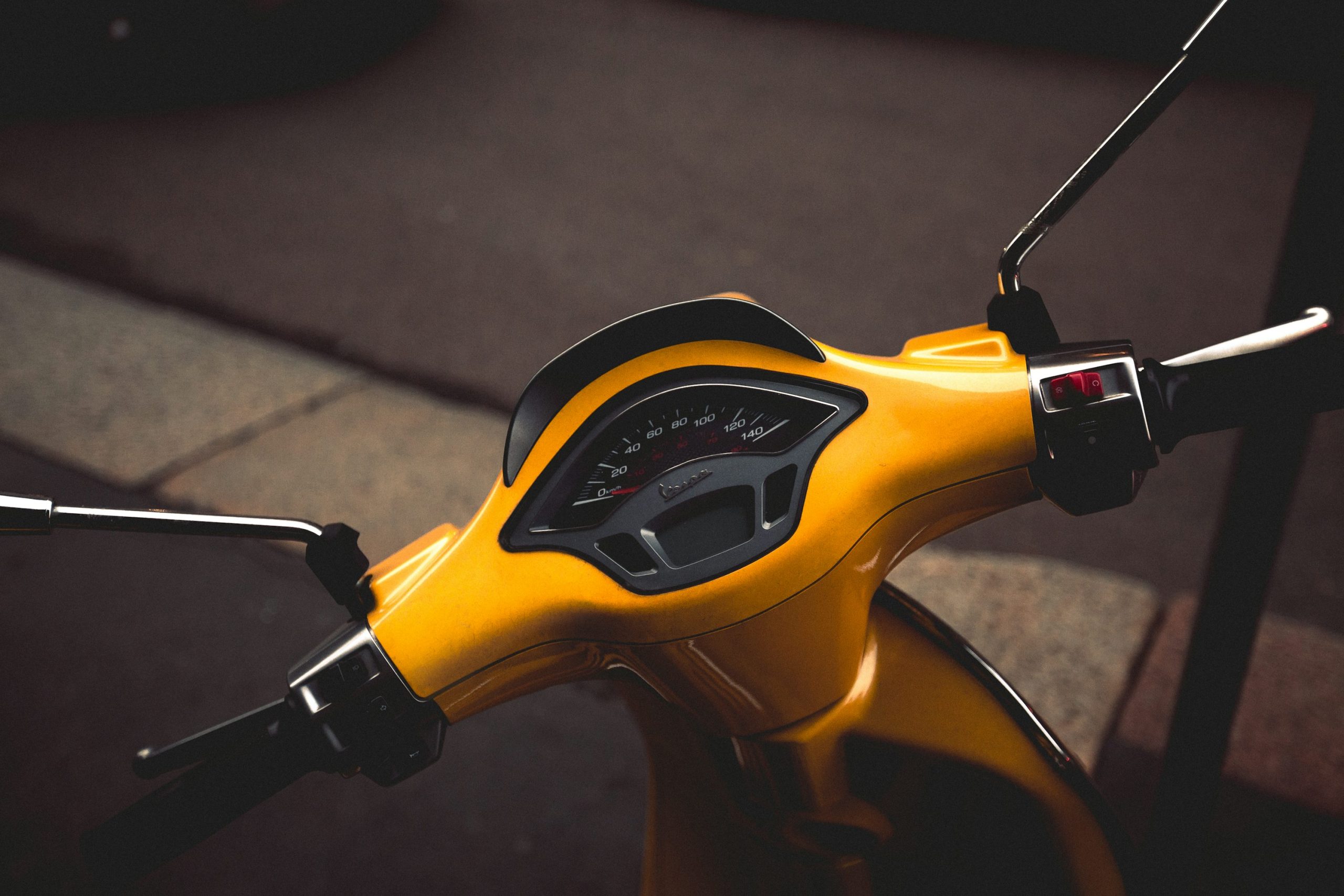Mopeds are a great way to travel, especially on an island like Hawaii, where every nook and corner has a story to tell. They are light and more eco-friendly when compared to motorcycles or scooters. While riding on them can be exciting, there is always a question that I’ve heard people asking— “Do you need insurance to ride a moped?”.
So, to clarify this topic, we’ve answered the question so you can freely ride your mopeds in Hawaii.
What is a Moped?
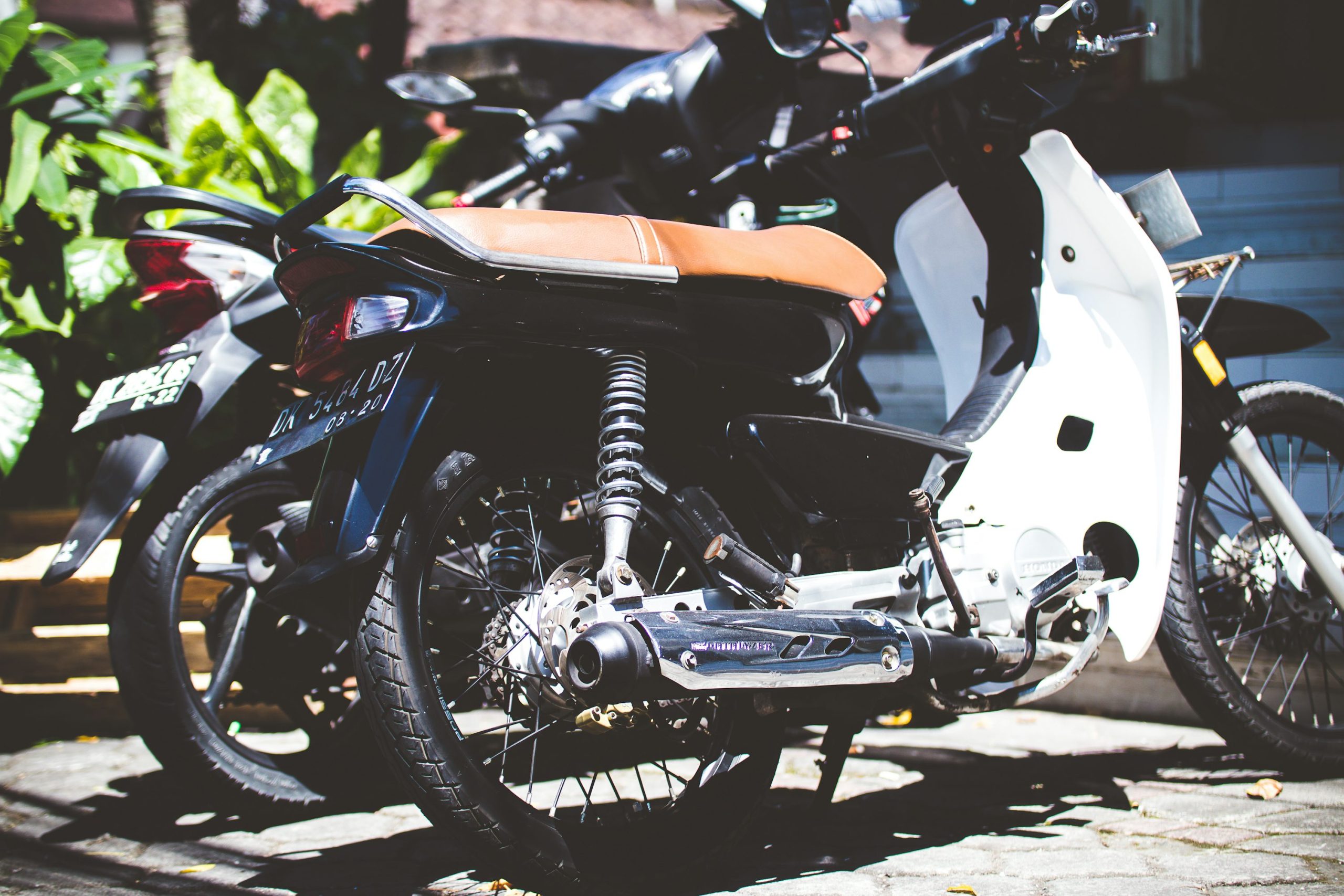
Coming to what exactly mopeds are!
Mopeds are basically motorized bikes. They are compact and require less parking space, but they are considered slower than scooters. Since you cannot expect much speed from these vehicles, it’s risky to ride them on roads with high-speed limits, which is why they are best for cities but not for highways.
A moped’s maximum engine size can only go up to 50 cubic cm, with a speed reaching only 28 to 30 miles/hour. Some mopeds even have pedals to power them, but you won’t see this in all mopeds. Although slow, mopeds are said to give better gas mileage, which ultimately saves you fuel and money.
In fact, the laws for moped driving are also very different from those for other two-wheeled vehicles. Some states require a valid driver’s license or an endorsement to ride mopeds, while many states do not require any special moped license.
Are Mopeds The Same In Hawaii?
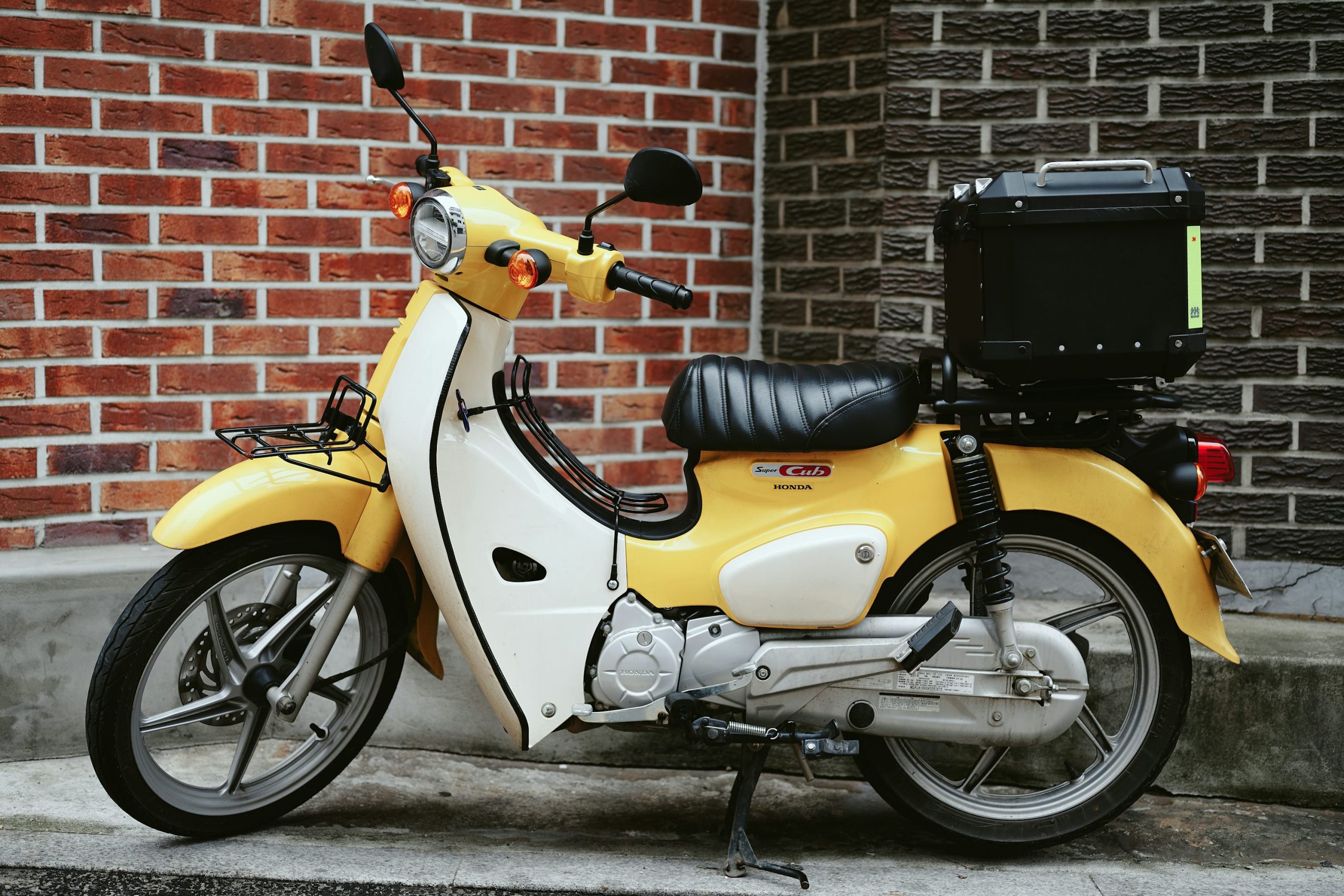
Mopeds are almost the same in Hawaii as the other countries. However, there are still small differences.
- While most mopeds are two-wheeled or have pedals, the ones you find in Hawaii are either two-wheeled or three-wheeled.
- The engine of these mopeds is no more than two horsepower.
- They do not have a clutch or gear, making it easier to ride.
- The speed limit is only up to 30 miles/hour (just like any other moped). If at all the speed limit exceeds, it is not regarded as a moped, and different rules may apply to it.
How Are They Different From Scooters and Motorcycles? Does Engine Size Matter?
Mopeds, scooters, and motorcycles are all classified as motor vehicles, but they have different registration, licensing, and insurance requirements. While these are two-wheeled vehicles, they do have some distinct features.
| Features | Mopeds | Scooters | Bikes |
| Engine Size | Have engines with a displacement of 50cc or less. | Have engines ranging from 50cc to 250cc. | Has a wide range of engine sizes, from 250cc to over 1,000cc, depending on various performance levels. |
| Speed | Designed for lower speeds, often up to around 30-40 mph. | Designed for moderate speeds, often between 30-60 mph, depending on the engine size. | Capable of reaching higher speeds, often exceeding 60 mph, and capable of highway speeds. |
| Design | Usually, they have smaller frames and lighter builds than scooters and motorcycles. They often feature bicycle-like pedals and an extra wheel. | Generally, they have a step-through design, making them easy to mount and dismount. They feature automatic transmissions, which simplifies operation. | These have a larger and more robust frame. They feature manual transmissions, though there are also automatic models. |
| Licensing | In many places, operating a moped may require a less stringent license or permit than for scooters or motorcycles. | Requirements for scooter licenses vary by region, but generally, depending on the engine size, they may require a specific motorcycle or scooter license. | Riding a motorcycle usually requires a specific motorcycle license, which often involves more rigorous testing and training. |
| Usage | Ideal for short trips and urban commuting due to their low speeds and fuel efficiency. | Suitable for urban commuting and short to medium-distance travel. They offer good fuel efficiency and maneuverability. | Suitable for long-distance travel, sport riding, and touring. They offer greater power and speed compared to mopeds and scooters. |
The major difference between these two-wheeled vehicles lies in their engine capacity, speed potential, appearance, and need for licenses. Mopeds are compact and slow-moving, while scooters offer average speed, thus making them more convenient as they come with automatic transmissions. Motorbikes are meant for high performance on different kinds of rides.
Do Mopeds Need Insurance?

Mopeds and scooters are mainly used interchangeably as they don’t have much difference. But, when it comes to insurance laws, this small difference can be a huge deciding factor in whether or not mopeds need insurance.
Car insurance typically does not cover rented mopeds, and most insurance companies cover mopeds under their motorcycle insurance policies.
Scooters’ engines are mainly 50cc or sometimes even more, which is why they fall under a motorcycle insurance policy. Most states don’t make you get insurance for your moped. But if you’re renting or leasing one, your lender might want you to have it, even if your state doesn’t require it.
Mopeds are usually covered under motorcycle insurance, just like scooters. If you do need insurance, liability coverage is the minimum. However, you can get extra coverage if you want more protection for your moped. One of the best ways to obtain moped insurance is through an approved auto insurance company.
Moped Insurance In Hawaii
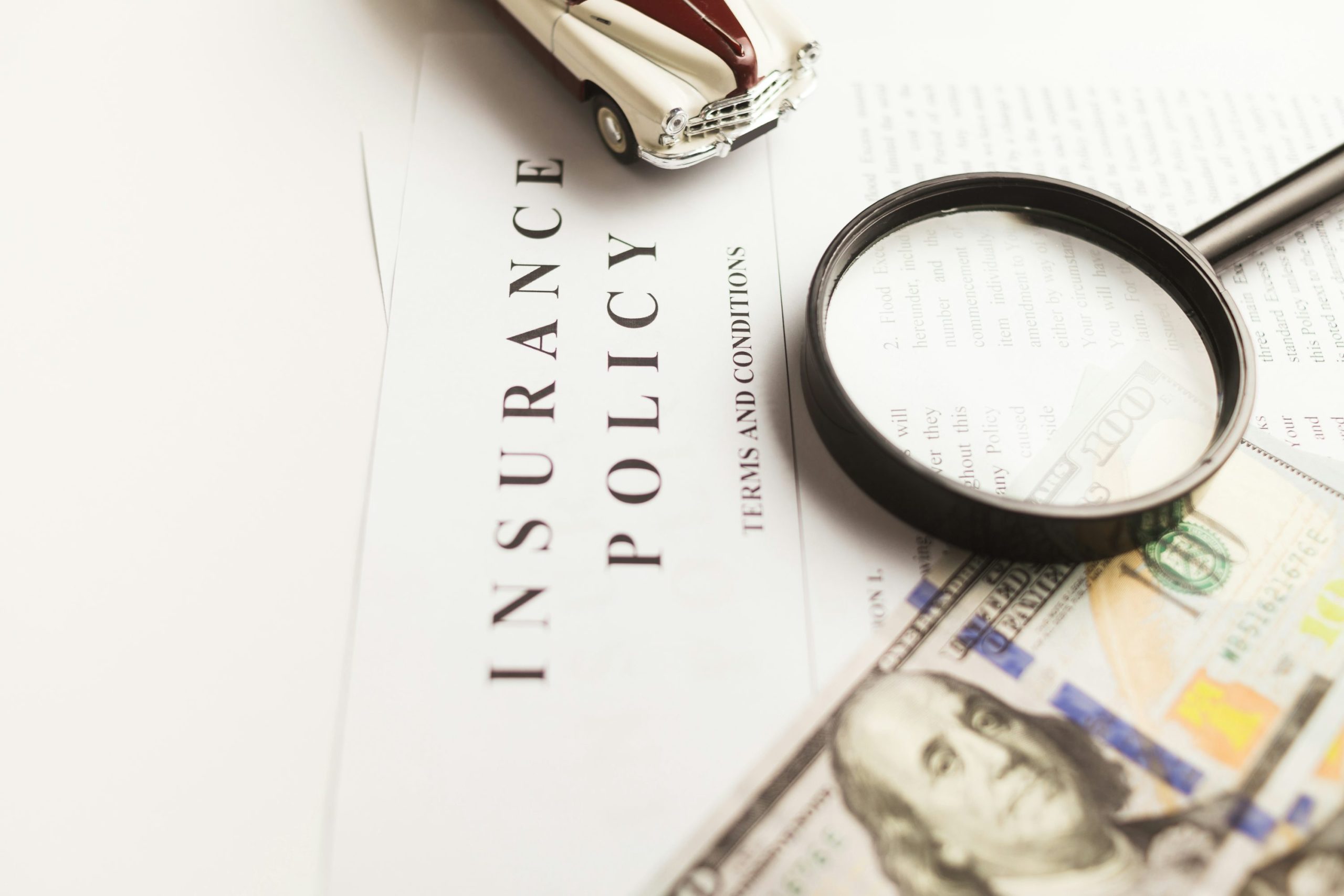
While many motorized vehicles are treated the same and may require insurance in many places, insurance laws differ from state to state.
In Hawaii, moped riders are treated the same as other drivers on the road. If you are one, you should drive carefully to avoid accidents. However, you can expect some legal differences. Like, moped owners in Hawaii don’t need moped insurance.
However, moped owners in Hawaii may need to purchase liability insurance to cover property damage or bodily injuries caused in an accident.
But what if they meet with accidents? Their accidents are treated like bicycle crashes.
However, if you have a three-wheeled moped or when you’re renting one, liability insurance is necessary. In these cases, you should have property damage insurance or liability insurance always at hand.
Honolulu also has specific rules for moped drivers. These are:
- One must wear a helmet.
- One must have a valid motorcycle license or a driver’s license.
- They must complete their driver’s lesson.
- They must pass the skill test.
- Their moped must have a valid license plate.
- They should follow the state’s traffic laws regarding bike paths and lanes.
- Annual inspections should be conducted at the stations to ensure the moped meets the basic city standards for emissions, safety, and noise.
- Drivers must adhere to the parking rules and park their vehicles in designated spots.
What Does Moped Insurance Cover? Does It Include Liability Insurance?

When getting insurance, you can expect to get similar benefits and coverage as you get on cars or motorcycles.
On Your Belongings: The insurance covers your belongings if they get lost, stolen, or damaged when you are riding.
Injury On Body Or Property: Both the injury cover the damage for an accident caused by you, whether it is to a person or a property. Property damages also include parts of a house or any vehicle the victim might have. This is usually a liability insurance.
Medical Payments: If you’ve met with an accident and got hurt or your co-passenger has died, the insurance will cover the medical costs as well as the funeral costs.
Collision: This will cover the repairs if your moped is damaged in an accident, regardless of your fault.
Comprehensive Insurance: This insurance covers damage to a moped caused by any natural disaster, vandalism, fire, falling objects, theft, or accidentally hitting an animal.
Uninsured Or Underinsured Motorists: This covers medical bills, lost income, and other expenses if someone without insurance crashes into you. On the other hand, underinsured motorist insurance covers your injuries if the at-fault driver doesn’t have enough liability insurance.
What Do You Need To Ride A Moped In Hawaii? Do You Need A Motorcycle License?
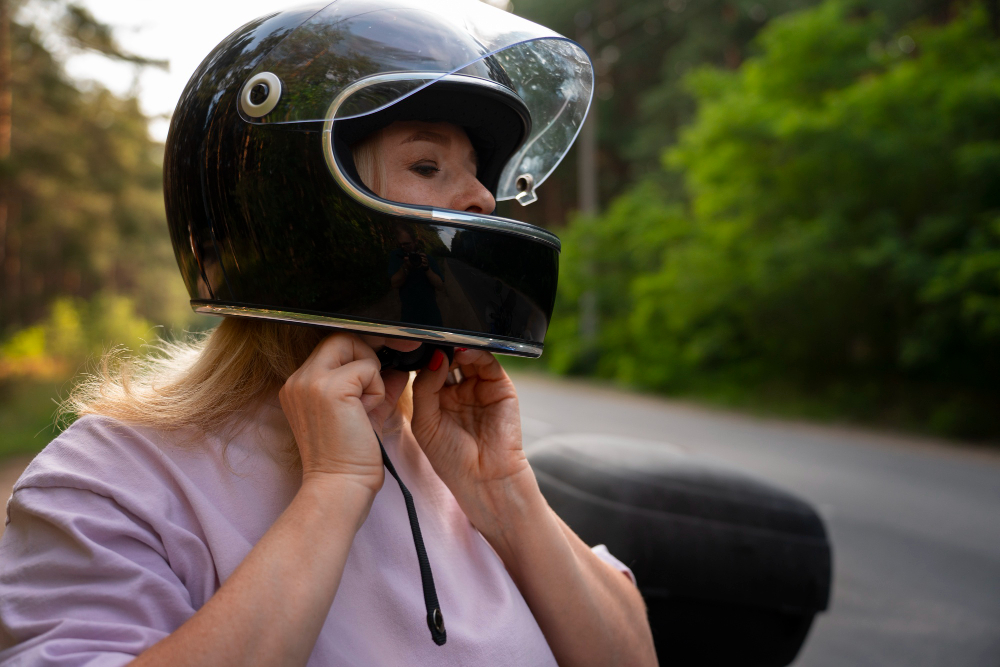
In Honolulu, there are a few specific moped laws you need to know to stay on the right side of local and state rules and to legally ride it. Here’s a quick rundown of the important stuff:
Registration: You need to register your moped every year, and part of that process is passing a safety inspection. If you buy your moped from a dealer, they’ll usually help with the initial registration and give you a Certificate of Inspection.
Age Requirement: You must be at least 15 years old to ride a moped. This is so that riders have the needed knowledge and skills needed for safe driving.
License: You need a valid driver’s license to legally operate a moped. If you have a motorcycle operator’s license, that’s good too—it’s classified as a ‘type 2’. Also, everyone riding motorcycles or scooters has to carry liability insurance.
Protection: While it is not necessary to wear helmets if you’re over 18 while riding a moped. But if you’re under 18, you have to wear one. If possible, wear eye protection too.
Number Of Passengers: You can’t carry more than one person on a moped in Hawaii—it’s meant for solo riders only.
Maximum Speed: Moped riders should keep it reasonable and not go over 30 miles per hour.
Lanes To Use: If you’re riding a moped in traffic, you should stick as far right as possible; the only exception is when you’re turning left. You should use bike lanes if they’re available, and you can’t ride on sidewalks.
Moped Permit: If you want to ride a moped, you need to get a learner’s permit from the Driver Education Student Completion Certificate and a Behind-the-Wheel Student Completion Certificate. Plus, you have to practice with a motorcycle instructional permit for at least 180 days before you can take the skills test.
Transfer Of Ownership: When you’re selling a moped, the seller has to fill out some paperwork, and the buyer needs to handle the transfer within 30 days of the sale to avoid a late fee.
Factors Affecting Insurance Costs

Insurance costs can vary widely based on a number of factors. Here’s an overview of the main elements that typically influence insurance premiums:
Type Of Two-Wheeled Vehicle: The kind of two-wheeler you own can affect your insurance premium a lot. For instance, superbikes usually come with higher premiums because they’re linked to higher speeds and more accidents. On the other hand, scooters and mopeds have lower premiums because they’re seen as less risky.
Two-Wheeler’s Value: Two-wheelers cost more to repair or replace, so they come with higher premiums. Insurance companies look at your vehicle’s market value to determine how much coverage will cost, so if your bike is worth more, you must expect to pay a higher premium.
Two-Wheeler’s Age: Two-wheelers that are new have higher premiums because they’re pricier to repair or replace. As your vehicle gets older, the premium generally goes down.
Insurance Coverage Type: Getting insurance from a third-party insurance plan will cost you less as it offers less coverage compared to a comprehensive policy. However, it’s often better to go for comprehensive coverage to protect both your two-wheeler and third-party liabilities fully.
Capacity Of Your Two-Wheeler’s Engine: The engine capacity of your two-wheeler also determines your insurance premium. Two-wheelers that have larger engines (measured in cubic centimeters or cc) usually have higher premiums.
Additional Coverage: Add-ons can boost your insurance coverage but will also raise your premium. Some add-ons you can expect are roadside assistance, engine protection, zero depreciation cover, etc. While they offer extra protection, they do add to the overall cost.
FAQs
Do mopeds need insurance?
Generally, whether a moped needs insurance depends on the jurisdiction. In many places, mopeds are required to have insurance, but the requirements can vary widely. In Hawaii, if you are renting out a moped or have a 3-wheeled moped, it is good to have liability insurance.
What type of insurance do I need for a moped?
Mopeds typically require liability insurance, which covers damages or injuries you may cause to others in an accident.
What happens if I get caught riding a moped without insurance?
Not having insurance won’t be a problem if you get caught. But if you don’t follow the traffic rules and moped riding laws, you may have to pay hefty penalties.
To Wrap Up
While mopeds are generally more eco-friendly and suitable for city travel, especially in places like Hawaii, it’s important to be aware of local laws.
In Hawaii, moped insurance is not mandatory unless you’re renting or using a three-wheeled moped, where liability insurance becomes necessary. Always make sure to adhere to safety guidelines, licensing requirements, and local regulations to enjoy a hassle-free riding experience.
